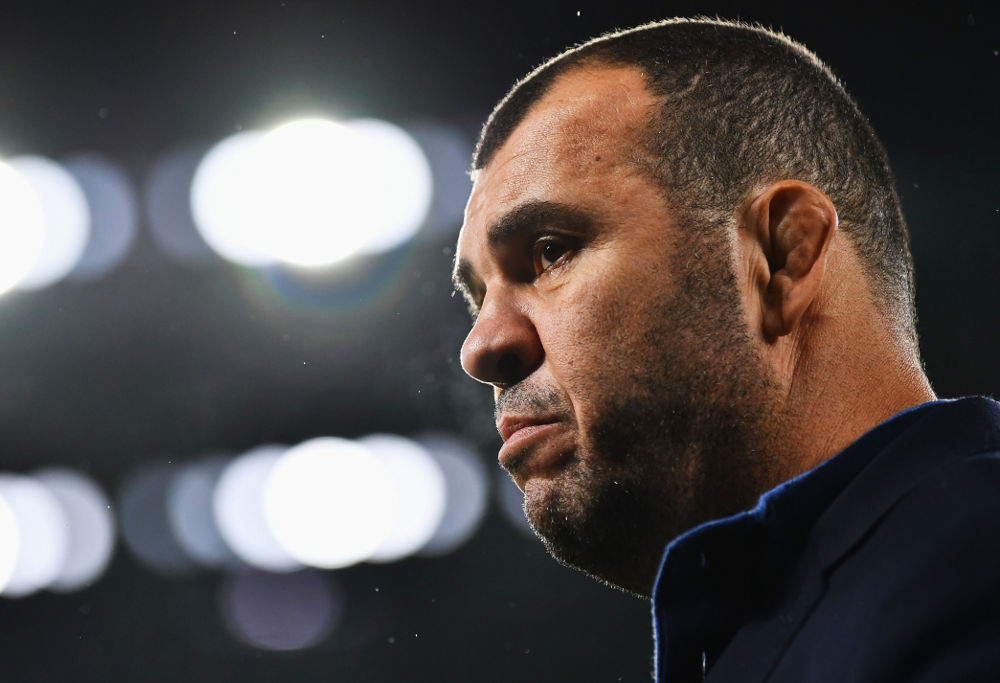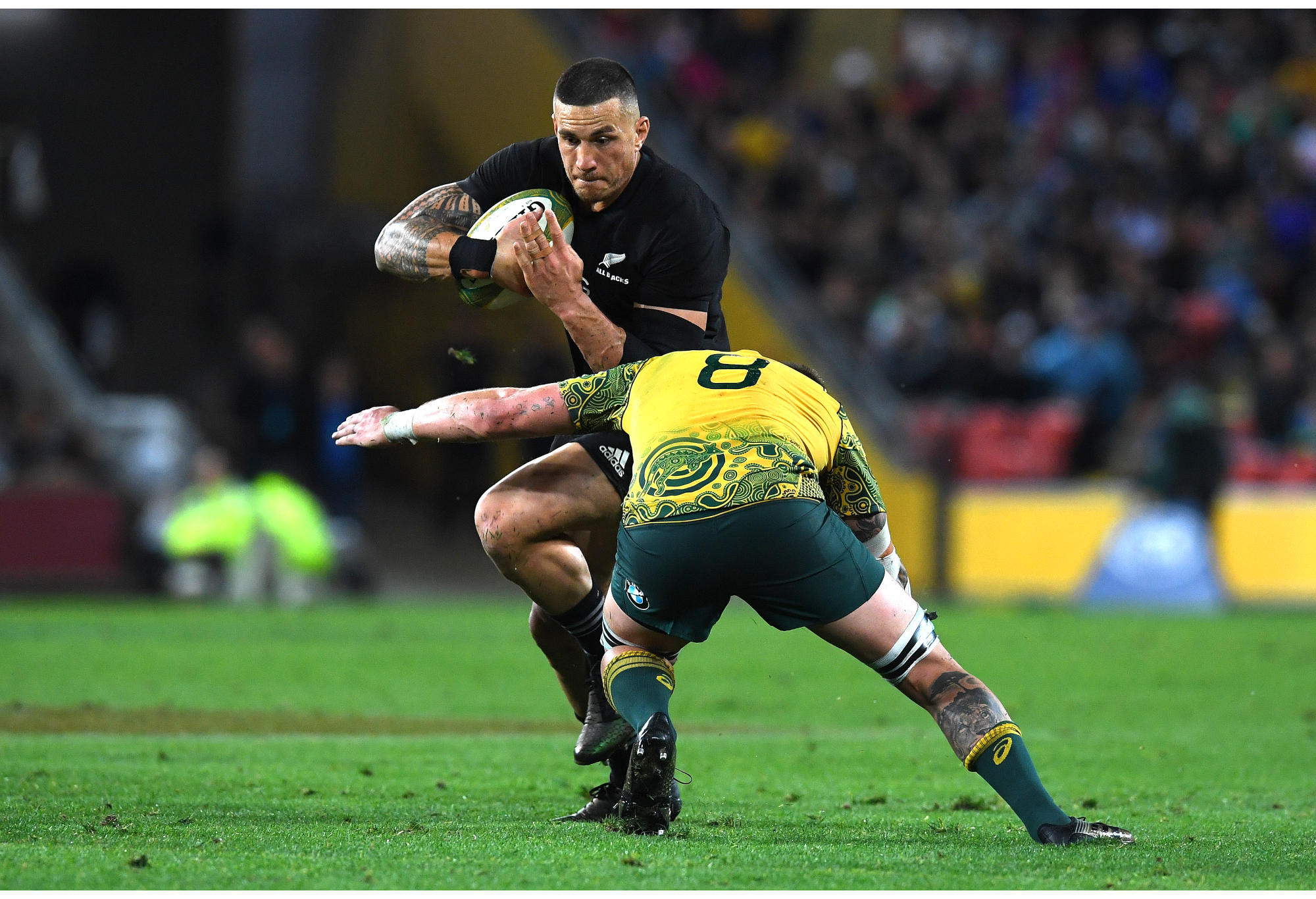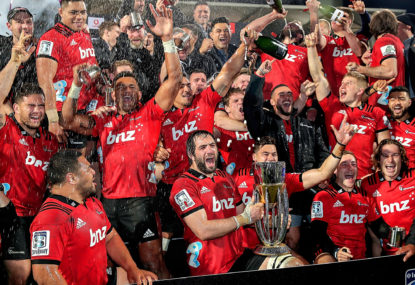With a tick over 70 per cent of the Super Rugby final being played in the Crusaders’ half, the Lions – a side renowned for their attacking prowess – may have been excused in thinking that they had found the key to an upset victory.
They weren’t able to convert their territorial dominance into a famous win however, highlighting not only their own limitations, but also the superior intelligence and preparation of the Crusaders – which was illustrated via a couple of other, telling statistics.
The Lions’ sweep to the finals had been punctuated by dominance at the breakdown, with Malcolm Marx and Kwagga Smith, time after time, homing in on the tackled player and latching on to the ball long enough to be rewarded. The Lions other ‘go to’ was their attacking lineout maul, which served up multiple tries, mostly to Marx.
But consider this stat from the final: the Lions threw to 11 attacking lineouts inside the Crusaders’ 22 – an extraordinary number – the majority of them from only five metres out. But rather than buckle under such intense pressure, the Crusaders seemed to thrive on the opportunity to repel each one. With it, they sucked the confidence out of a Lions side, who in turn must have been shell-shocked at how their normally reliable pathway to points was shut off.
The Lions other banker – turnover penalties – also failed to materialise, their first penalty at the breakdown not coming until the 75th minute, long after the game had already been lost.
One explanation for this is that the Lions dominating possession meant fewer opportunities to turnover Crusaders’ ball. Another is the organisation and efficiency of the Crusaders’ cleanout, along with the speed at which they operated.
It is that speed, along with ruthless efficiency, that isn’t recorded in the match statistics, but which was no better demonstrated than in the lead-up to the opening try, scored by Seta Tamanivalu. The Crusaders didn’t do anything that any other ‘mere mortal’ sides attempt to do – pop a runner through a midfield hole, recycle and shift the ball the same way to a flying winger – but they did it with such pace and precision that the Lions, even knowing what was coming, were powerless to stop it.

The Crusaders just know how to win. (AP Photo/Mark Baker)
Tamanivalu leaves the Crusaders with the honour of being the first try-scorer in two successive winning finals, and the satisfaction of knowing that he was a major contributor on the night, typified by his determined effort to regain possession from a 22 dropout in the 59th minute, and turn defence into attack at a vital time.
That dropout was the result of the Lions resorting to a long-distance penalty attempt from Ruan Combrinck, a curious call by a side that, while it was only ten points down at the time, needed to seize the initiative. The decision to take such a low percentage shot for goal spoke to how much their line-out had been neutered, but was also a sign of how these Lions are not the same side they were under Johan Ackermann, where a live-wire like Faf Du Plessis, would have tapped and ran and made something happen.
Not only was this the moment to change tack, to try to break up or at least stress the structure of the disciplined Crusaders defence, it would also have been a more faithful representation of the Lions USP. They have shown over three seasons that they are a side that plays their best when they play instinctively and without fear.
It takes two sides to make a game however, and it’s easy to criticise the Lions – or the Hurricanes and Sharks before them – for lacking a ‘Plan B’ when an opponent as good as the Crusaders forces you down blind alleys and dead ends, and then, when presented with only the slightest of opportunities themselves, finishes you off with clinical precision.
By contrast to their conservative opponent, the Crusaders, down to 14 men in the 65th minute, didn’t go into their shell too early, or look to manage the clock, to eke out a nervous win. Instead, they took a quick line-out throw, freed up George Bridge, and seconds later Scott Barrett was under the posts, franking the victory in style.
[latest_videos_strip category=”rugby” name=”Rugby”]
It was only late that the Crusaders closed ranks and played out time, the match ending as it began, with yet another ineffectual Lions line-out raid being snuffed out.
This set the scene for a poignant post-match ceremony, veteran Wyatt Crockett being duly recognised for his sterling 13-year shift as a Crusader, and Lions captain Warren Whiteley again demonstrating all that is great about sport in his concession speech.
If there was any predictability about how this denouement – and the whole season – played out, it should not be considered as criticism. The Lions gave it everything they had, and there is nothing wrong with rewarding a worthy winner. The best way for Super Rugby to become more unpredictable is simply for the other sides to get better.
The match also added more fuel to the now raging bonfire that is Richie Mo’unga’s claim to the All Blacks’ number ten jersey. Steve Hansen seems very keen to carefully stage-manage Mo’unga’s development – as he has done successfully with other developing players – but the assuredness and class which Mo’unga brings is making Hansen’s desire to hold him back, harder by the week.
Despite a worthwhile Wallabies trial match at Leichhardt Oval on Friday night, Michael Cheika’s job also hasn’t got any easier, with most of the Crusaders forward pack looking in great shape to back up for the All Blacks in Sydney, in two weeks’ time.

Michael Cheika (Photo by Dan Mullan/Getty Images)
‘Super Rugby is not Test rugby’ is a refrain we have heard repeated for many years now, and perhaps earlier in the season, when the Crusaders were kept at the top of the competition by the efforts of many of their less heralded squad players, this may have been more applicable.
But now that heavy hitters like Keiran Read and Ryan Crotty have worked their way back into the side after injury, there seems to be no reason why these Crusader combinations, and strengths in close quarter ball transfer, won’t continue to ensure that the All Blacks dominate the Rugby Championships.
Following the final, world domination quickly became a talking point, with fans keen to debate the relative merits of the Crusaders and Leinster, Pro 14 and European Champions Cup winner.
As all of these things are, it’s another interesting talking point to be had over a beer or a keyboard (try not to mix the two), and despite the Crusaders’ dominance of Super Rugby, there should be little or no doubt that Leinster would match up evenly – both over the course of a long competition, and in a one-off final.
But ultimately it’s a pointless exercise – if there was to be such a match, one team would be out of season and one (or both) would have to travel, immediately allowing the losing team’s fans to attach an asterix to the result.
Consider also that the rugby calendar is so crowded that any such ‘world challenge’ match would have to come at the cost of the Test program. The talking points generated by such an exercise would have substantially far greater implications for rugby than merely who is the best club/franchise team.
Any elevation of club/franchise rugby at the expense of Test rugby will only serve to illuminate even further, the commercial disparity in rugby, between north and south. And it doesn’t require any matches to played in order to know how this would resolve itself – Super Rugby is in no shape to take on the market size and sheer weight of money that exists in other competitions.
Whatever the on-field merits of Super Rugby, and the improvement made over the 2017 season, it is the All Blacks, Wallabies, Springboks and Pumas jerseys which provide the intrinsic and financial value for the southern hemisphere nations. Hence SANZAAR’s ongoing internal conundrum to make Super Rugby as good as it can be without making it as great as it can be, lest it diminishes the international game.
For as long as rugby’s primary battle remains in the Test arena, the southern nations remain powerful. If, or as soon as, the club game attains primacy, then that power will be gone – and with it, all of the leading players, who will naturally gravitate to the one or two leading competitions where the highest salaries are paid.

Can the Wallabies beat the All Blacks this season? (AAP Image/Dan Peled)
In that light, news last week that English Premiership clubs are expecting a cash windfall of £140 million when the league’s broadcasting rights come up for grabs in 2021 must be of concern. Premiership rugby’s current six-year deal with BT Sport is worth around £200m but Saracens chief executive Mitesh Velani told The Rugby Paper; “We’re now at a stage where Premiership rugby – and Saracens are one of 12 stakeholders in that – want to take the deal to the next level, where it increases significantly again and reaches the point where rugby becomes a real commercial frontrunner. I think it can go another 70 per cent” (£140m or more than £20m increase per season).
While some point to shaky looking balance sheets and wonder how clubs like Saracens continue to operate successfully, be in no doubt that (if it happens) most of this extra money would find its way into the pockets of players via increased salaries – that’s simply how professional sport works.
New Zealand and Australia have held the line remarkably well in recent times, South Africa and Argentina less so. The return of Kurtley Beale last year, and now Matt Toomua, are examples of Australian rugby swimming against the tide.

(AAP Image/David Moir)
But there is a pressure point looming again next year, with the World Cup providing a natural juncture for players to determine whether a Test jersey or the potential of a Test jersey outweighs the opportunity for them to build a more secure future for themselves and their families.
That this time frame coincides with SANZAAR negotiating its own broadcasting rights future will no doubt make for a very nervous and tetchy time within the halls of Rugby Australia and New Zealand Rugby.
Nervous and tetchy might also describe the mood backstage before the next Wiggles concert, with the split being announced over the weekend between yellow Wiggle Emma and purple Wiggle Lachy.
It isn’t known if the customary band-mates ‘creative differences’ is at the heart of the bust-up, although their press release states that the couple will continue on in their roles as Wiggles. Just without any more wiggling.
In the meantime, rugby fans without four-year-old children might like to ponder one final statistic. With only Tamanivalu, Crockett and new Wallaby Pete Samu likely to be lost from the 2018 Crusaders line-up, and coach Scott Robertson very much in the ascendancy, Super Rugby title number ten in 2019 would already seem to be well within the Crusaders’ reach.

































































































